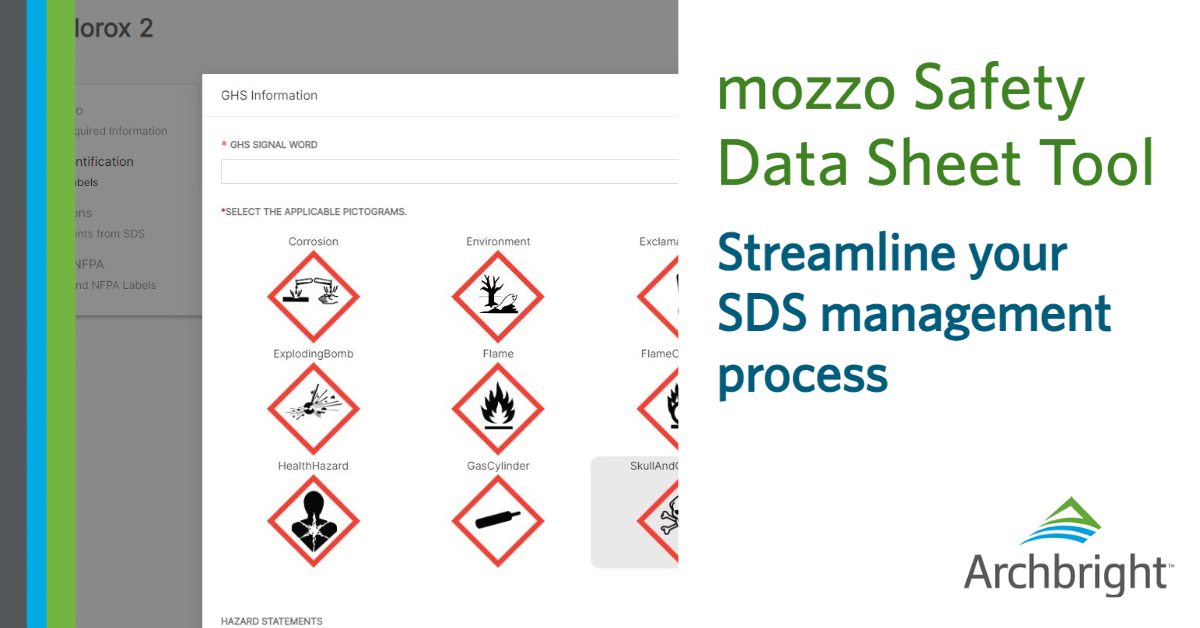The Occupational Safety and Health Administration (OSHA) officially announces its top ten most frequently cited standards every April for the previous fiscal year. OSHA provides this information in hopes of helping employers strengthen their workplace safety programs to prevent workplace injuries and illnesses. The collected data also directs the agency where to focus when identifying and developing resources such as online publications, presentations, and other content.
Even though the official report release isn't due for several months, OSHA shared preliminary data during the National Safety Council's (NSC) fall expo. While this information may change slightly when officially released in April, OSHA's preliminary top ten most cited standards for the fiscal year 2023 (Oct. 2022 through Sept. 2023) are consistent with previous years' data. The top violations include:
- Fall Protection–General Requirements
For 13 years, general industry fall protection activities addressed in 29 CFR 1910 have earned the rank of the most cited OSHA regulation, accounting for more than 7,200 citations in fiscal year 2023 alone. To help prevent violations, employers should identify and address potential sources of falls in the workplace by installing guarding around holes and open-sided floors, guardrails and toe-boards, and safety nets or railings where fall hazards are present. Employees should be trained on dangers and hazard prevention.
- Hazard Communication
Hazard Communication (HazCom), a rule designed to protect employees from chemical-related injuries and illnesses, is addressed in approximately 10% of all OSHA inspections. OSHA standard 1910.1200 outlines affected employer rules, including program requirements, proper container labeling, employee training, and chemical safety data sheet maintenance. Worksites where employees are exposed to chemicals must have a site-specific HazCom program and follow all HazCom rules.
- Ladders
While roofing contractors account for the majority of violations, any employer with a ladder on site is subject to the rules outlined in 1926.1053. Before use, ladders must be inspected for damage, never be loaded beyond their designated weight capacity (typically 250 pounds or less), and steps/rungs must be free of slip hazards. Workers must always use the correct type and size of ladder for the job and face the ladder during use with at least one hand touching it at all times. Ladders must be stored when not in use.
- Scaffolding
OSHA's construction standard 1926.451 stipulates that every scaffold and its components must bear its weight and at least four times the maximum intended load. The platform should be 18 inches wide at a minimum and equipped with a guardrail or personal fall arrest system. Employers outside the construction field with scaffolds should check requirements addressed in the general industry standards 29 CFR 1910.
- Powered Industrial Trucks
The powered industrial trucks (PITs) standard 1910.178 addresses requirements for forklifts, tractors, platform lift trucks, motorized hand trucks, and specialized industrial trucks powered by electric motors or combustion engines. However, this rule does not cover other types of industrial trucks or farm vehicles. Employers with PITs must maintain equipment, train and certify operators before use regardless of previous experience, conduct pre-shift inspections, and only use equipment and approved PIT attachments as outlined in the OSHA standard and manufacturer's instructions.
- Lockout Tagout
Lockout Tagout (LOTO) is a method used to control hazardous energy and must be used when energized machinery or equipment requires adjustment, service, or repair. It involves de-energizing the equipment by locking or blocking its energy sources. Tags are used to warn other workers not to use the equipment. Employers with energized machinery or equipment must follow the rules outlined in 1910.147, including developing a program for affected and authorized employees, creating LOTO procedures, conducting inspections, and providing employee training and communication.
- Respiratory Protection
Employers must follow the requirements outlined in 1910.134 when employees are required or allowed to wear respirators voluntarily. OSHA's rule mandates that employers identify the workplace's airborne hazards, create a program that includes training, and supply appropriate equipment based on the identified risks. Employers are often cited for not enforcing respirator use when permissible exposure limits are reached and failing to follow the rule's medical evaluation, fit-testing, and cleaning and storage components.
- Fall Protection–Training Requirements
While general industry fall protection is the number one violation, this violation type focuses on failure to train employees who might be exposed to fall hazards. Training topics covered in 1926.503 include workplace fall hazards, fall protection procedures, safety protection systems, safety monitoring, equipment limitations on low-sloped roofs, overhead protection, and employees' roles in fall protection plans. Written employee training records are required, and re-training is needed when hazards change or employees demonstrate a lack of familiarity with the procedures.
- Personal Protective and Lifesaving Equipment–Eye and Face Protection
OSHA standard 1910.133 requires employers to provide eye and face protection to workers exposed to hazards such as flying particles, molten metal, liquid chemicals, acids or caustic liquids, chemical gases or vapors, or potentially injurious light radiation. Protection must meet ANSI.Z87 requirements and side shields must be worn if there is a potential for flying objects. Prescription eyewear is permissible when it meets the guidelines outlined in the OSHA standard.
- Machine Guarding
Employees working with or around machinery can face numerous dangers, including rotating parts, pinch points, sparks, loud noises, hot surfaces, etc. While OSHA standard 1910.212 addresses requirements for all machines and is often the standard cited for machine guarding violations, employers should also review requirements that apply to their specific equipment or industry outlined in 29 CFR 1910.
Top Ten Safety Violations on the West Coast
While OSHA sets the minimum safety standards for employers nationwide, many states host safety programs that meet or exceed federal regulations. These state-run agencies are responsible for developing and enforcing safety and health rules in their states. Below is a summary of the most recent safety and health violation data from states along the West Coast.
California
California's Division of Occupational Safety and Health's (DOSH, better known as Cal/OSHA) most frequently cited safety rules for calendar year 2022 include:
- Injury and Illness Prevention Program, General Industry §3203
- Heat Illness Prevention in Outdoor Places of Employment §3395
- Injury and Illness Prevention Program, Construction §1509
- COVID-19 Prevention §3205
- Reporting Work-Connected Fatalities and Serious Injuries §342
- The Control of Hazardous Energy for the Cleaning, Repairing, Servicing, Setting-Up, and Adjusting Operations of Prime Movers, Machinery and Equipment, Including Lockout/Tagout §3314
- Portable Fire Extinguishers §6151
- Hazard Communication §5194
- Portable Ladders §3276
- Emergency Eyewash and Shower Equipment §5162
Oregon
Oregon's Occupational Safety and Health's (OR-OSHA) most frequently cited safety rules for calendar year 2022 include:
- Written Hazard Communication Program 29 CFR 1910.1200(e)
- Fall Protection OAR 437-003-1501(1)
- Safety Committees or Safety Meetings OAR 437-001-0765(1)
- Safety Committee Meeting Documentation OAR 437-001-0765(13)
- Ladders 29 CFR 1926.1053(b)
- Fall Protection Training Certification OAR 437-003-0503(2)
- Respiratory Protection Program 29 CFR 1910.134(c)
- Hazard Communication Employee Information and Training 29 CFR 1910.1200(h)
- Safety Data Sheets 29 CFR 1910.1200(g)
- Powered Industrial Truck Operator Training 29 CFR 1910.178(1)
Washington
Washington's Department of Labor and Industries (L&I) most frequently cited safety rules for fiscal year 2021 (Oct. 2021 through Sept. 2022) include:
- Accident Prevention Program (APP), Construction Industry WAC 296-155-110
- Safety Committees and Safety Meetings WAC 296-800-130
- Accident Prevention Program (APP), General Industry WAC 296-800-140
- Chemical Hazard Communication WAC 296-901-140
- Fall Protection at Four Feet or More WAC 296-880-200
- Fall Protection at Ten Feet or More and Training WAC 296-880-10020
- Personal Protective Equipment (PPE) WAC 296-800-160
- First-Aid WAC 296-800-150
- Asbestos, Tremolite, Anthophyllite, and Actinolite WAC 296-62-077
- Employer Responsibilities: Safe Workplace WAC 296-800-110
What Should Employers Do With This Information?
All employers should regularly evaluate their workplace's safety and health programs for effectiveness. This analysis should include reviewing national and state violation data as well as worksite injury trends and near-miss reports. Injury and near-miss information helps employers focus on areas where employees are most likely to get hurt, while violation data allows the organization to understand what inspectors often look for. Taking a comprehensive approach to risk management by reviewing all this information along with other details like in-house inspection, training, and repair records can improve workplace safety and reduce the likelihood of costly citations.
Eligible Archbright members can find sample templates and tools to support their safety programs in the mozzo Resource Library and have access to Safety Consultants using the mozzo chat feature. To learn more about how Archbright can help your organization's safety and health programs, contact info@Archbright.com today!


